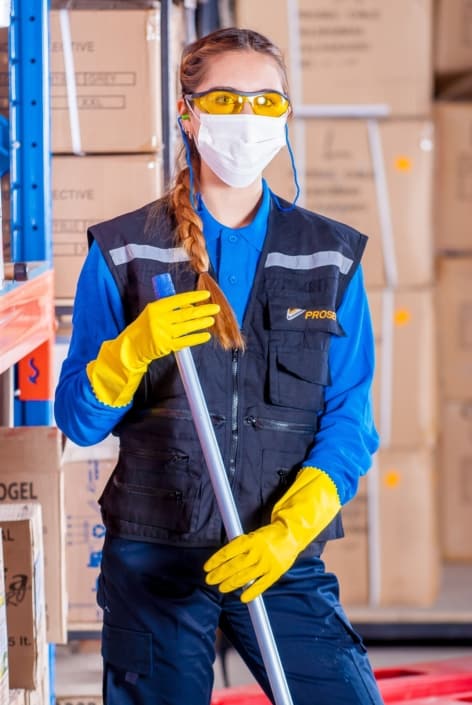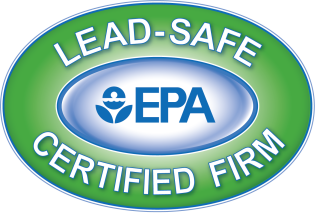Everyone knows the best way to clean mold is with bleach, right? Wrong! Keep reading to find out the best way to clean mold — and why never to use bleach.
WHY NOT KILL MOLD WITH BLEACH?
The goal of mold cleaning is not to kill mold, or even to disinfect a surface or material, but rather to remove mold from a surface. Think of mold more like dirt. If you had a wall with dirt on it, would you simply spray it with bleach and consider it cleaned? Of course not.
Bleach is a combination of chemicals used as an agent to kill bacteria and whiten clothes, floors, and walls. Bleach contains sodium hypochlorite which is toxic to bacteria, fish, and human beings. In fact, the Environmental Protection Agency (EPA) discourages the use of bleach and biocides for mold cleaning.
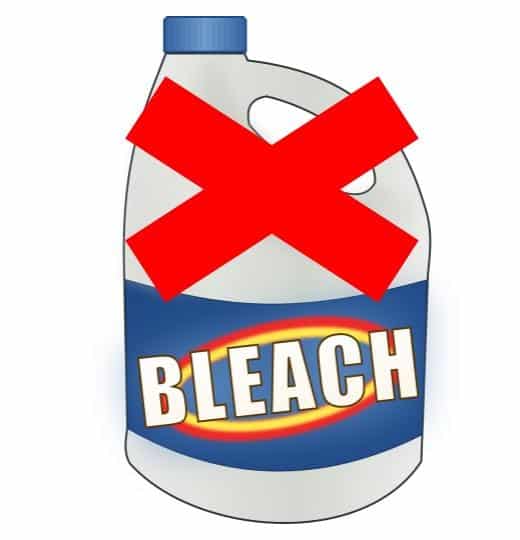
Of course, there are more reasons to avoid bleach. Bleach is designed to kill bacteria, and will not completely remove a mold problem. Molds are fungi and they can, and will, grow back after bleaching.
There are 4 simple ingredients you can safely use to clean away mold in your home: white vinegar, baking soda, hydrogen peroxide, and detergent or soap. What about all of the mold cleaners that are being marketed? What about the claims that a certain product kills mold, removes mold, removes stains, disinfects surfaces and prevents mold from ever returning? If it sounds too good to be true, it usually is.
HARD SURFACE CLEANING
To clean a hard surface (like a shower stall, tiles, toilet, sink, or floor), simply add hydrogen peroxide OR white vinegar to a clean, empty spray bottle undiluted. Never mix these chemicals! Choose one or the other.
When using hydrogen peroxide, spray the area to clean thoroughly, and let it sit for 10-15 minutes. Then, scrub the area, and rinse it clean with water. Repeat if needed.
For white vinegar, spray the area to clean thoroughly, and let it sit for at least 15 minutes or up to one hour. Then, scrub the area, and rinse it clean with water.
To use baking soda, add a teaspoon to a tablespoon of baking soda to a clean empty spray bottle and fill the bottle ¾ full of hot water. Shake to dissolve. Spray the area and use a scrub brush to clean the mold away.
When using the baking soda, it usually works best with a white vinegar spray following the baking soda. Baking soda is a base and vinegar is an acid. When they are used together, they react to form carbon dioxide gas and heat. The heat helps clean the surface, and the chemical reaction kills fungi and bacteria alike.
We recommend treating surfaces with a product such as Concrobium Mold Control after cleaning to kill any remaining mold spores and to provide some level of inhibition of future mold growth.
Hard Surface Cleaning with Detergent or Soap
Another method for cleaning mold on non-porous and some hard, porous surfaces is to scrub and/or damp wipe the surface with a mild detergent solution or soap. It’s simple physics. Mold is hydrophobic, meaning it lacks an affinity for water or repels away from water and aerosol sprays. When water is applied to a moldy surface, it causes mold spores to scatter. When detergent is added to the water, it acts as a surfactant. Surfactants break down the surface tension. This causes the mold spores to be released from the surface and allows them to be easily removed by wiping.
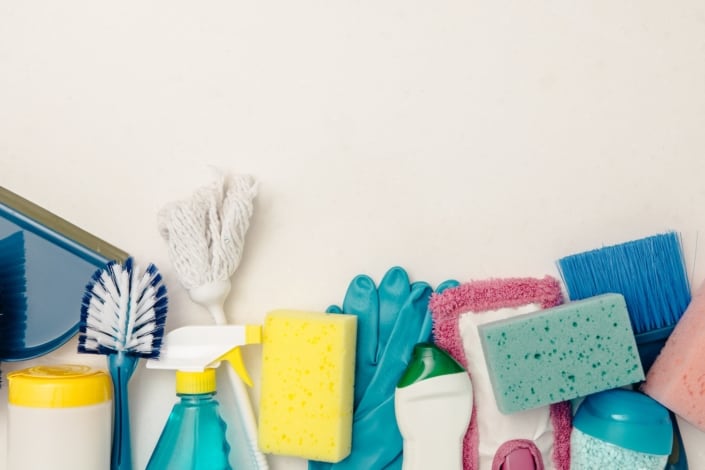
WHAT ABOUT POROUS ITEMS?
Porous items such as upholstered furniture, clothing, carpet and ceiling tiles are more difficult to clean. If the mold is extensive, then these items will likely have to be discarded.
Light mold growth can be removed using a HEPA filtered vacuum cleaner, by professional laundering or by specialized furniture or carpet cleaning companies. Even after cleaning, remaining mold stains may be difficult or impossible to remove. Also remember that when using a HEPA filtered vacuum you still have to empty the vacuum, which is now full of mold spores.
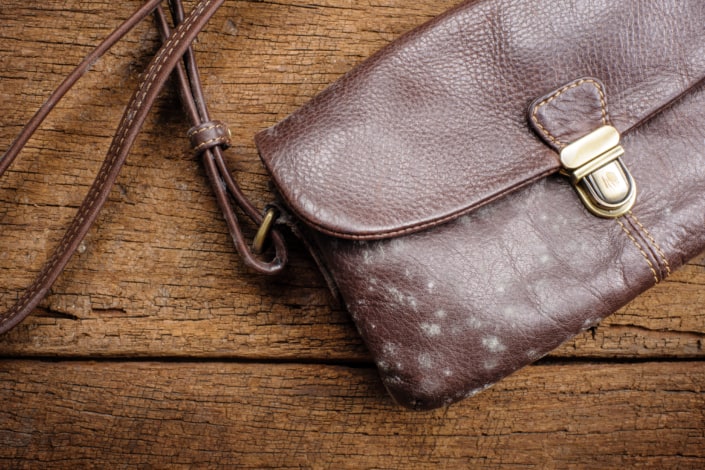
WHAT TO WEAR TO CLEAN MOLD SAFELY
Before even choosing a cleaning product, you should know what kind of safety equipment to wear to clean a moldy surface.
The basic equipment consists of an N-95 respirator, goggles or eye protection, & protective gloves with long cuffs. Long pants, a long sleeved shirt and waterproof boots are important to wear as well. Closed toed shoes are a good substitute for boots, especially if you are working on a small area of mold.
Mold is a respiratory irritant and allergen, so a mask with a N-95 respirator is important, especially if you know you are allergic to mold. A simple dust mask will NOT protect you from the mold spores. For more information about safety, visit: What to Wear before entering a Home or Building with Mold Damage by the CDC. To learn more about face masks see our post: In-depth Guide to Face Masks: Allergies, Grass Cutting, and COVID-19.
